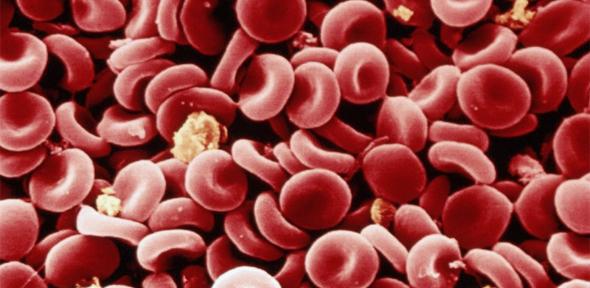
The human body produces over 2.5 million new blood cells during every second of our adult lives, but how this process is controlled remains poorly understood. Around 30,000 new patients each year are diagnosed with cancers of the blood each year in the UK alone. These cancers, which include leukaemia, lymphoma and myeloma, occur when the production of new blood cells gets out of balance, for example if the body produces an overabundance of white blood cells.
Biomedical scientists from the Wellcome Trust-MRC Cambridge Stem Cell Institute and the Cambridge Institute for Medical Research collaborated for the past 2 years with computational biologists at Microsoft Research and Cambridge University’s Department of Biochemistry. This interdisciplinary team of researchers have developed a computer model to help gain a better understanding of the control mechanisms that keep blood production normal. The details are published today in the journal Nature Biotechnology.
“With this new computer model, we can carry out simulated experiments in seconds that would take many weeks to perform in the laboratory, dramatically speeding up research into blood development and the genetic mutations that cause leukaemia,” says Professor Bertie Gottgens whose research team is based at the University’s Cambridge Institute for Medical Research.
Dr Jasmin Fisher from Microsoft Research and the Department of Biochemistry at the University of Cambridge says: “This is yet another endorsement of how computer programs empower us to gain better understanding of remarkably complicated processes. What is ground-breaking about the current work is that we show how we can automate the process of building such programs based on raw experimental data. It provides us with a blueprint to develop computer models relevant to other human diseases including common cancers such as breast and colon cancer.”
To construct the computer model, PhD student Vicki Moignard from the Stem Cell Institute measured the activity of 48 genes in over 3,900 blood progenitor cells that give rise to all other types of blood cell: red and white blood cells, and platelets. These genes include TAL1 and RUNX1, both of which are essential for the development of blood stem cells, and hence to human life.
Computational biology PhD student Steven Woodhouse then used the resulting dataset to construct the computer model of blood cell development, using computational approaches originally developed at Microsoft Research for synthesis of computer code. Importantly, subsequent laboratory experiments validated the accuracy of this new computer model.
One way the computer model can be used is to simulate the activity of key genes implicated in blood cancers. For example, around one in five of all children who develop leukaemia has a faulty version of the gene RUNX1, as does a similar proportion of adults with acute myeloid leukaemia, one of the most deadly forms of leukaemia in adults. The computer model shows how RUNX1 interacts with other genes to control blood cell development: the gene produces a protein also known as Runx1, which in healthy patients activates a particular network of key genes; in patients with leukaemia, an altered form of the protein is thought to suppress this same network. If the researchers change the ‘rules’ in the network model, they can simulate the formation of abnormal leukaemia cells. By tweaking the leukaemia model until the behaviour of the network reverts back to normal, the researchers believe they can identify promising pathways to target with drugs.
Professor Gottgens adds: “Because the computer simulations are very fast, we can quickly screen through lots of possibilities to pick the most promising ones as pathways for drug development. The cost of developing a new drug is enormous, and much of this cost comes from new candidate drugs failing late in the drug development process. Our model could significantly reduce the risk of failure, with the potential to make drug discovery faster and cheaper.”
The research was supported by the Medical Research Council, the Biotechnology and Biological Sciences Research Council, Leukaemia and Lymphoma Research, the Leukemia and Lymphoma Society, Microsoft Research and the Wellcome Trust.
Dr Matt Kaiser, Head of Research at UK blood cancer charity Leukaemia & Lymphoma Research, which has funded Professor Gottgens’ team for over a decade, said: “For some leukaemias, the majority of patients still ultimately die from their disease. Even for blood cancers for which the long-term survival chances are fairly good, such as childhood leukaemia, the treatment can be really gruelling. By harnessing the power of cutting-edge computer technology, this research will dramatically speed up the search for more effective and kinder treatments that target these cancers at their roots.”
Reference
Moignard, V et al. Decoding the regulatory network of early blood development from single-cell gene expression measurements. Nature Biotech; 9 Feb 2015.
The first comprehensive computer model to simulate the development of blood cells could help in the development of new treatments for leukaemia and lymphoma, say researchers at the University of Cambridge and Microsoft Research.
The text in this work is licensed under a Creative Commons Licence. If you use this content on your site please link back to this page. For image rights, please see the credits associated with each individual image.
